Learning how to recycle 3D printer filament with a 3D printer filament recycler is super easy if you have the right tools. It requires a little bit of patience, space to store failed prints and other waste plastic, and a few appliances.
But the process itself is very simple. The best part about it is that you can get set up to extrude filament in an afternoon.
There are several brands of home extruders to choose from, as well as filament spoolers, grinders and accessories in case you want to augment the extrusion process. Our favorite is Filabot.
In combination, these machines and accessories make the process simple enough for a blind monkey to pull off.
Table could not be displayed.
Why Recycle 3D Printer Filament

The main reason to recycle filament is simply cost savings. 3D printing inherently involves wasting a lot of plastic on failed prints, disposable rafts and supports for larger prints with overhangs. All of this plastic usually ends up getting thrown out.
But over time the value of that waste plastic will add up and end up costing you a lot of money.
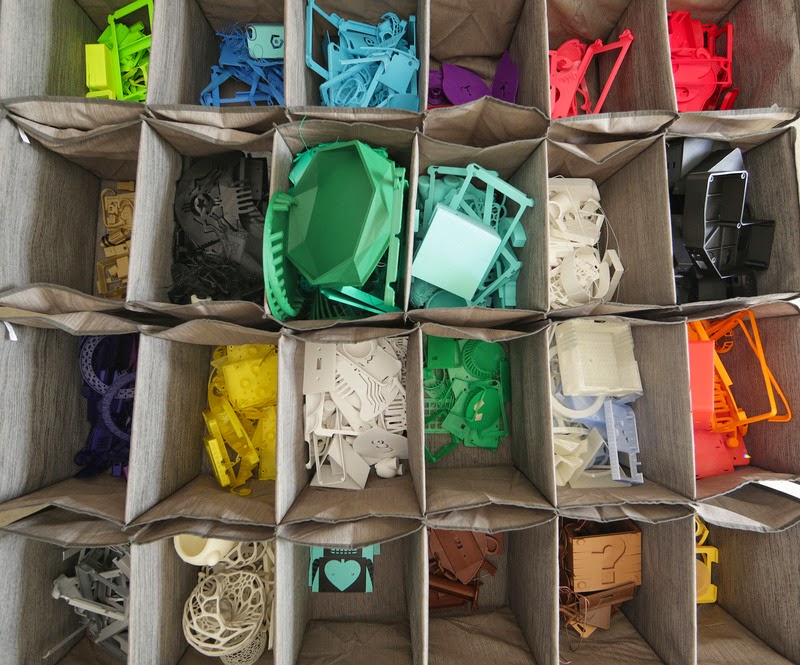 Instead of throwing these failed prints away, if you store them in a bin, you can eventually recycle them back into filament for reuse. Your homemade filament probably won’t the same quality as production level filament, but it will still be usable and can save you a lot of money.
Instead of throwing these failed prints away, if you store them in a bin, you can eventually recycle them back into filament for reuse. Your homemade filament probably won’t the same quality as production level filament, but it will still be usable and can save you a lot of money.
There are also environmental concerns to think about. Recycling is something we are all taught to do from a young age. Diligent recycling habits reduce the pollution caused by waste materials entering the environment after we are done with them.
Clearly 3D printing produces a lot of waste plastic. Considering that plastic is perhaps the number one waste material that negatively impacts our environment, learning how to recycle 3D printer filament can reduce the impact the 3D printer plastic has on the environment in general.
Step 1: Collect Plastic For Extrusion
It takes a good amount of plastic to extrude a 1kg spool. The first thing you will need is a set of bins or sorting trays to store filament and to help you separate out different colors of plastic.
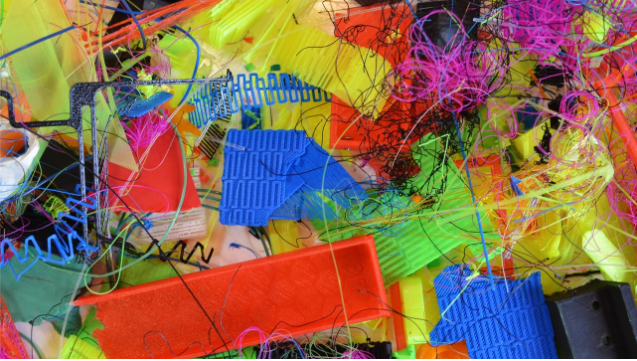 If you were thinking ahead, you might have already set these up beforehand so that you could just toss failed prints of various colors into their respective bins. But if not, no worries, just set up your containers and get sorting.
If you were thinking ahead, you might have already set these up beforehand so that you could just toss failed prints of various colors into their respective bins. But if not, no worries, just set up your containers and get sorting.
A popular type of container to use for sorting is fabric shoe holders. However, those containers aren’t air tight, and it can take a while to build up enough waste filament of each color to have enough to extrude.
As a result, it’s best to use large tupperware containers or smaller plastic storage bins the size of a shoe box.
Step 2: Smash And Shred The Plastic To Bits
There are a bunch of different ways to do this. The easiest way is with a good old mallet. Just smash up your larger plastic pieces until they are small enough to pass through your extruder.
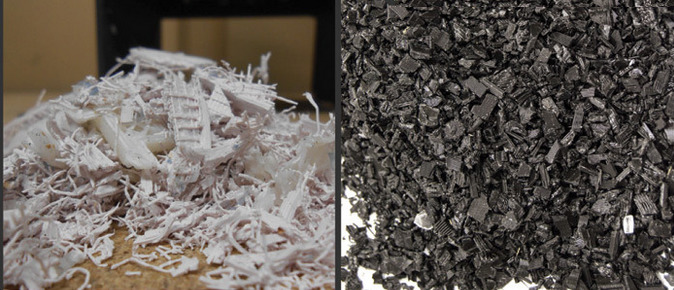
You are going to have to try a few sizes of the particles until you figure out the best size to extrude. A good way to contain the plastic bits as you are smashing objects is to place them in a cloth bath and then break them up with the mallet.
Snow Joe Sun Joe CJ601E 14-Amp Electric Wood Chipper/Shredder
One way to speed up the process is to do a little bit of smashing with mallet and then put the pieces through a paper shredder or an electric wood chipper. You would be surprised how easily a regular paper shredder can handle ABS plastic.
It shreds the plastic into nearly perfectly sized bits. Wood chippers or mulchers work even better but they are more expensive. Also, you might have to pass the plastic through the paper shredder a few times to get the right size.
Step 3: Extrude The Plastic Bits Into Filament
This is the main event. Once you have enough shredded plastic particulate, feed it into your extruder and let it do its magic.
You can get several different types of extruders, such as the Filabot and the Filastruder. We discuss them each in more detail below.
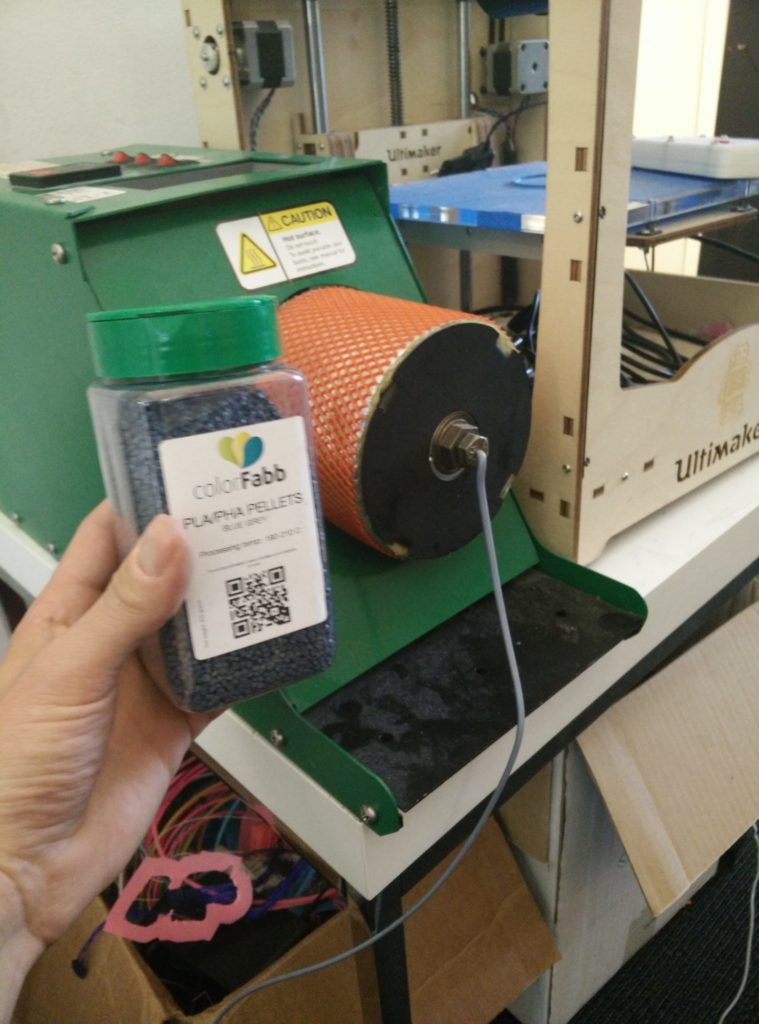
The main thing to keep in mind is that you want the filament to cool enough before it hits the ground so that it doesn’t deform.
Some people use a filament winder to help the process. Once you get your process figured out, this shouldn’t be much of a problem.
Best Filament Extruder And Filament Recycler
Filabot
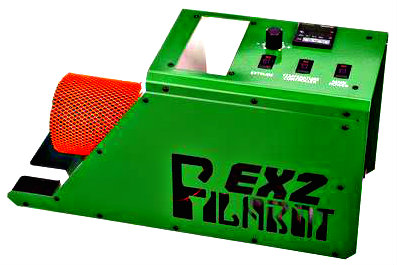
Filabot makes the best filament recycler system around. Filabot began as a kickstarter project in 2013, launched by Tyler McNaney to fund the creation of his personally designed filament extruder. The initial prototypes were pretty rough.
Tyler put up a video on the kickstarter of a crudely constructed hand powered extruder with an intake funnel and a heated nozzle. You can see Tyler cranking away at that thing while feeding it bits of plastic, fumes spewing out of the top and plastic filament slowly oozing out of the nozzle.
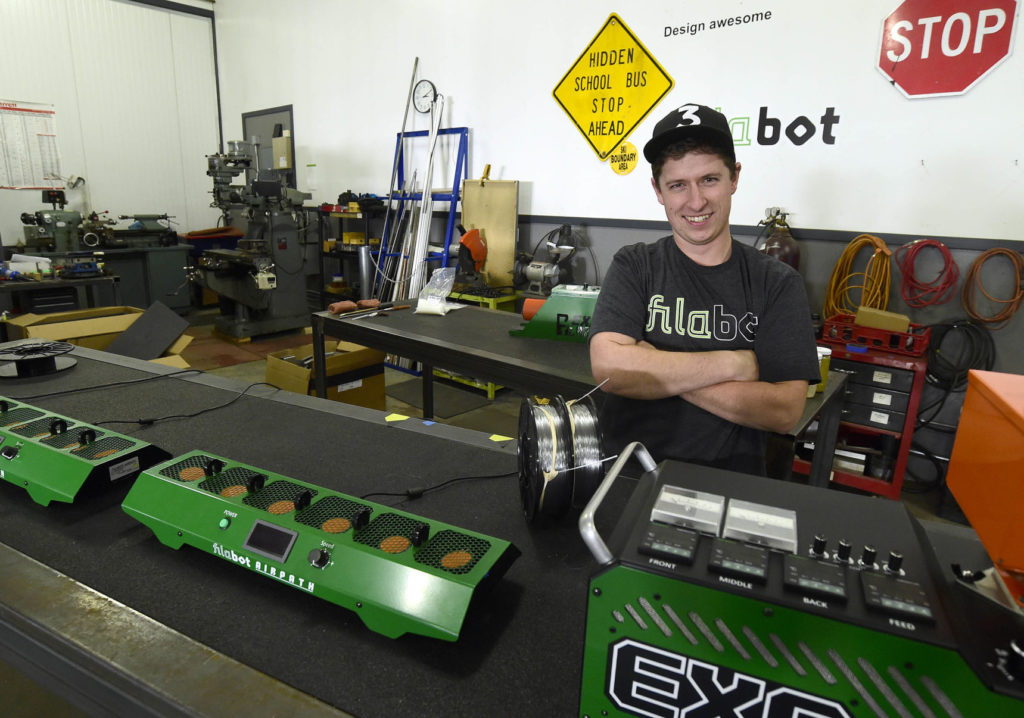 Filabot has come a long way from those early days. The company now produces a complete suite of filament production and recycling appliances. For the beginning of the recycling process, Filabot offers an industrial strength plastic grinder that converts waste plastic into extrudable plastic particles.
Filabot has come a long way from those early days. The company now produces a complete suite of filament production and recycling appliances. For the beginning of the recycling process, Filabot offers an industrial strength plastic grinder that converts waste plastic into extrudable plastic particles.
The machine is a serious piece of equipment and can churn out plastic particles at amazing speeds. Filabot constructed it with small printer services business in mind. The idea is that printer services can recycle failed prints back into usable filament and save money. As a result, it’s not really the best option for home extruders.
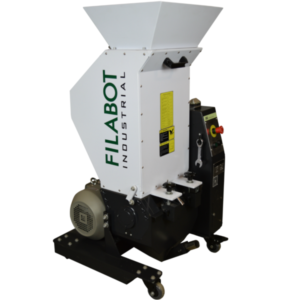
But Filabot is mostly known for its awesome home filament extruders. Their extruders are the industry standard for home extrusion and are built to make extrusion extremely simple.
You pretty much just put your crushed plastic bits into the intake, choose your settings, and turn the thing on.
The filabot will then extrude the filament slowly out of the nozzle at an even pace. The machine is fairly quiet and doesn’t produce too many fumes while it does it’s thing.
You could guide the filament down onto the floor or onto a table surface in large coils as it cools. But if you want to extrude in style, you can buy the Filabot filament spooler.
This nifty piece of machinery will automatically wind your filament onto a spool for you as it comes out of the extruder. That is super helpful since keeping the diameter consistent and preserving the shape of the filament as it cools is probably the hardest part of the entire extrusion process.
Filabot also sells empty spools, so pick a few up when you buy your Filabot and you are all set to go.
Other Filament Extruders To Check Out
Wellzoom
Wellzoom also makes a filament extruder that is pretty good. They are one of the most popular types of extruder around. These machines are only sold on Amazon though so you are going to have to check them out there.
But the reviews on Amazon indicate that Wellzoom appliances do a good job. Also, if there is a problem with the machine, you can contact customer support and they will replace it immediately.
The Future Of Home Filament Extrusion
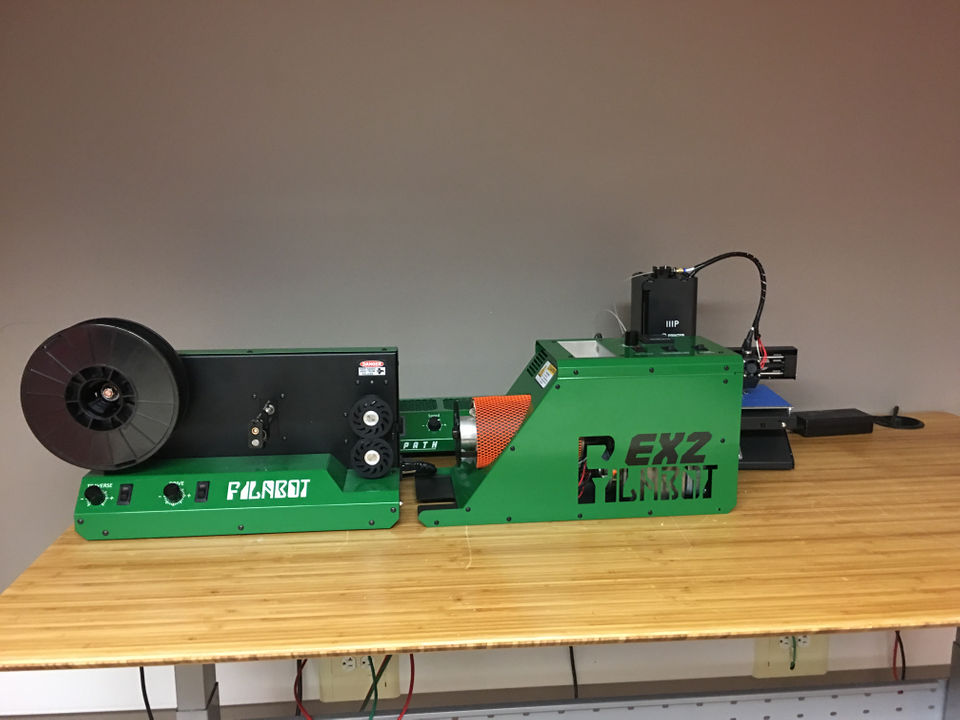
Homes extrusion is a super hot topic right now in the filament industry. There are tons of new extruder systems being developed right now and every year the technology gets better.
That means it’s going to get easier to recycle 3D printer filament at home. The first generation of home extruders already get the job done and they are improving quickly.
Filabot, Wellzoom and Filastruder are well worth the money.
There are tons of extruders being crowd funded right now and a few other brands of extruders are already being sold on Amazon. If there are other systems you think we should include on the list, leave a comment below.
Otherwise, happy extruding!








How many times can you recycle plastic before it loses it strength, structure or it cannot be recycled again in general?
Thank you
Hi Wolf! That really depends on the type of plastic you are trying to recycle. In application, if the plastic you are recycling is clean and high quality, you can recycle it 2 to 4 times before the quality starts to degrade sharply.